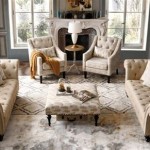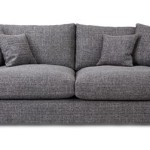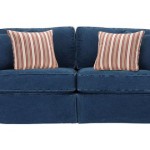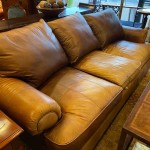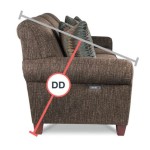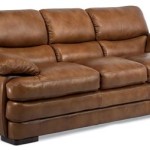Understanding 3 Seater Corner Sofa Dimensions
The 3 seater corner sofa is a popular seating choice for many households, offering a blend of comfort, style, and space efficiency. Its ability to fit snugly into corners makes it ideal for maximizing seating in smaller rooms while also providing ample space for relaxation and socializing in larger living areas. Understanding the dimensions of these sofas is crucial before making a purchase, ensuring the chosen model fits appropriately within the designated space and meets the specific needs of the users.
Variations in design, style, and manufacturer specifications contribute to a range of potential dimensions for 3 seater corner sofas. A "3 seater" designation primarily refers to the number of individuals the sofa is designed to comfortably accommodate. However, the corner component introduces additional complexities in measurement, as it alters the overall footprint and proportions of the furniture piece. This article will delve into the key dimensions to consider, the factors that influence these dimensions, and how to accurately measure your space to ensure a proper fit.
Key Dimensions to Consider
Several key dimensions play a crucial role in determining the suitability of a 3 seater corner sofa for a specific space. These measurements collectively dictate the sofa's footprint and how it will interact with the surrounding environment. Understanding each dimension provides a comprehensive overview of the sofa's size and allows for informed decision-making.
Overall Width: This is the total length of the sofa measured from one end of the armrest to the other, encompassing the entire width of the seating area and the corner section. It's arguably the most important dimension to consider, as it dictates how much wall space the sofa will occupy. This dimension can vary significantly depending on the style of arms, additional features like chaise lounges incorporated into the design, and the individual manufacturer's specifications. For a typical 3 seater corner sofa, the overall width can range from approximately 80 inches (203 cm) to well over 100 inches (254 cm).
Overall Depth: The overall depth measures the distance from the front edge of the sofa to the back, including the back cushions. This dimension determines how far the sofa will protrude into the room. Different styles offer varying depths, with more contemporary designs often featuring shallower depths. The depth of the corner section is also critical, as it impacts the overall footprint of the sofa in the corner. Standard depths typically range from 30 inches (76 cm) to 40 inches (102 cm), but some designs may deviate from this range based on their intended aesthetic and functionality.
Seat Depth: Unlike overall depth, seat depth measures the distance from the front edge of the seat cushion to the back cushion. This dimension directly impacts seating comfort and legroom. A deeper seat allows for more relaxed lounging, while a shallower seat may be more suitable for formal seating arrangements. Seat depths commonly range from 20 inches (51 cm) to 25 inches (64 cm), but can be adjusted based on design preferences.
Overall Height: The overall height measures the distance from the floor to the highest point of the sofa, including the back cushions. This measurement is important for considering the sofa's visual impact on the room and ensuring it doesn't obstruct windows or other architectural features. Higher backrests offer greater back support but may create a more imposing presence. Conversely, lower backrests promote a more minimalist aesthetic. Overall height generally ranges from 30 inches (76 cm) to 36 inches (91 cm).
Seat Height: Also known as the floor-to-seat height, this dimension measures the distance from the floor to the top of the seat cushion. Seat height influences ease of getting in and out of the sofa. Lower seat heights promote a more relaxed, laid-back seating experience, while higher seat heights facilitate easier movement for individuals with mobility limitations. Standard seat heights usually fall between 16 inches (41 cm) and 20 inches (51 cm).
Corner Section Dimensions: The corner section of a 3 seater corner sofa is a crucial element that significantly affects its overall dimensions. The dimensions of this section, including its width, depth, and angle, will determine how efficiently the sofa utilizes corner space and its overall spatial impact. Corner sections are not always perfectly square, and the angle at which they join the other sections can vary, leading to discrepancies in the depth and width measurements along the back wall of the corner. Precisely measuring these dimensions is essential for determining if it will fit within the designated corner of the room.
Factors Influencing Sofa Dimensions
Several factors contribute to the variation in dimensions observed across different 3 seater corner sofa models. These influencing factors encompass design considerations, manufacturing processes, and material selections, all of which play a role in shaping the final dimensions of the furniture piece.
Style and Design: The overall style and design aesthetic of the sofa exert a considerable influence on its dimensions. Modern, minimalist designs often feature sleeker profiles with shallower depths and lower backrests, contributing to a more compact footprint. Traditional designs, on the other hand, may incorporate deeper seats, higher backrests, and rolled arms, resulting in larger overall dimensions. The presence or absence of features like chaise lounges, reclining mechanisms, or adjustable headrests will also impact the overall width and depth of the sofa.
Arm Style: The style of the armrests significantly impacts the overall width of the sofa. Wide, rolled arms add considerable width, while slim, track arms contribute to a more streamlined profile. Armless designs, while less common in corner sofas, minimize width even further. The height and depth of the armrests also influence the overall aesthetic and functionality of the sofa. Higher armrests provide greater support, while lower armrests allow for more relaxed lounging.
Leg Height and Style: The height of the sofa legs influences the overall height and perceived spaciousness of the room. Higher legs create a greater visual gap beneath the sofa, making the room feel more open and airy. Lower legs contribute to a more grounded and substantial feel. The style of the legs, whether they are tapered, straight, or decorative, also impacts the overall aesthetic of the sofa. The material used for the legs, such as wood or metal, can also influence the durability and stability of the sofa.
Cushion Fill and Construction: The type of fill used in the cushions, such as foam, feathers, or a combination of both, affects the overall shape and dimensions of the cushions and, consequently, the overall dimensions of the sofa. Softer fills tend to compress more, resulting in a slightly lower seat height and a more relaxed seating experience. Firmer fills maintain their shape better, providing greater support and a more structured appearance. The construction of the cushions, including the presence of tufting or stitching, can also impact their overall dimensions.
Manufacturing Tolerances: Subtle variations in dimensions can occur due to manufacturing tolerances. These tolerances represent acceptable deviations from the specified dimensions during the production process. While manufacturers strive for accuracy, minor discrepancies are inevitable. These variations are often negligible but can become more noticeable when comparing dimensions across different units or models. It's advisable to check the manufacturer's specifications for tolerance levels before making a purchase.
Measuring Your Space Accurately
Accurate measurement of the available space is paramount to ensuring that a 3 seater corner sofa fits properly and integrates seamlessly into the room. Taking precise measurements prevents costly mistakes and ensures a functional and aesthetically pleasing outcome. This process involves carefully assessing the dimensions of the designated area and considering any potential obstructions or limitations that may affect the sofa's placement.
Measure the Length and Width of the Corner Space: Use a measuring tape to accurately measure the length of each wall that forms the corner where the sofa will be placed. Measure from corner to corner along the wall at the baseboard level. Record these measurements, as they will serve as the primary constraints when selecting a sofa. Account for any architectural features, such as windows, doors, or radiators, that may impede the sofa's placement.
Consider Doorways and Walkways: Before purchasing the sofa, measure the width and height of all doorways and hallways through which the sofa will need to be transported. Ensure that the sofa can physically fit through these passages. If the sofa is too large to fit through doorways fully assembled, inquire about disassembly options from the retailer or manufacturer. Disassembling the sofa into smaller components, such as the individual sections and armrests, may facilitate easier transport.
Account for Obstacles and Traffic Flow: Identify any potential obstacles in the room, such as electrical outlets, light switches, or heating vents, that may be obstructed by the sofa. Ensure that the sofa's placement does not impede access to these essential features. Consider the natural traffic flow within the room and ensure that the sofa's placement does not create bottlenecks or obstruct pathways. Leave adequate space for comfortable movement around the sofa.
Use Painter's Tape to Visualize the Sofa's Footprint: Before making a purchase, use painter's tape to mark the approximate dimensions of the sofa on the floor. This provides a visual representation of the sofa's footprint and allows for a more accurate assessment of its spatial impact. Experiment with different placements to determine the optimal configuration for the room. This step can help identify potential issues with traffic flow or accessibility before committing to the purchase.
Check Manufacturer Specifications Carefully: Always refer to the manufacturer's specifications for the exact dimensions of the sofa you are considering. Do not rely solely on general descriptions or estimates. Pay close attention to the individual dimensions of each section of the sofa, including the corner section. Compare these dimensions to your measured space to ensure a proper fit. Inquire about any tolerance levels or potential discrepancies in the dimensions.
Consider Future Needs and Flexibility: Before making a final decision, consider any potential future needs or changes in the room's layout. Choose a sofa that is adaptable and can be reconfigured if necessary. Modular corner sofas offer greater flexibility and can be easily adjusted to accommodate different spatial arrangements. Select a durable and well-constructed sofa that will withstand the test of time and continue to meet your needs for years to come.

Rosetta 3 Seater Fabric Right Corner Sofa Home Centre Saudi

Right Hand 3 Seater Modular Jumbo Cord Corner Sofa Off White Aprica Beliani De

Laura Hill Sarantino 3 Seater Corner Sofa Bed With Storage Lounge Chaise Couch Light Grey Myer

Cosy Velvet Mustard Solid Wood Corner Sofa 260 Cm Artico Interiors

Elm Corner Sofa With Matching Footstool 3 Seater In Air Leather Grey Diy At B Q

Right Hand 3 Seater Corner Sofa White Lofoten Beliani Cz

Captus 3 Seater Fabric Reversible Corner Sofa Bed With Storage Home Centre Saudi

Mirepoix 3 Seater Corner Sofa Rhf Fabric B Meubles

Fletcher 3 Seater Fabric Right Corner Sofa Home Centre Uae

Cosmopolitan Design Com Sofas Oslo Corner Sofa 4 Seats

